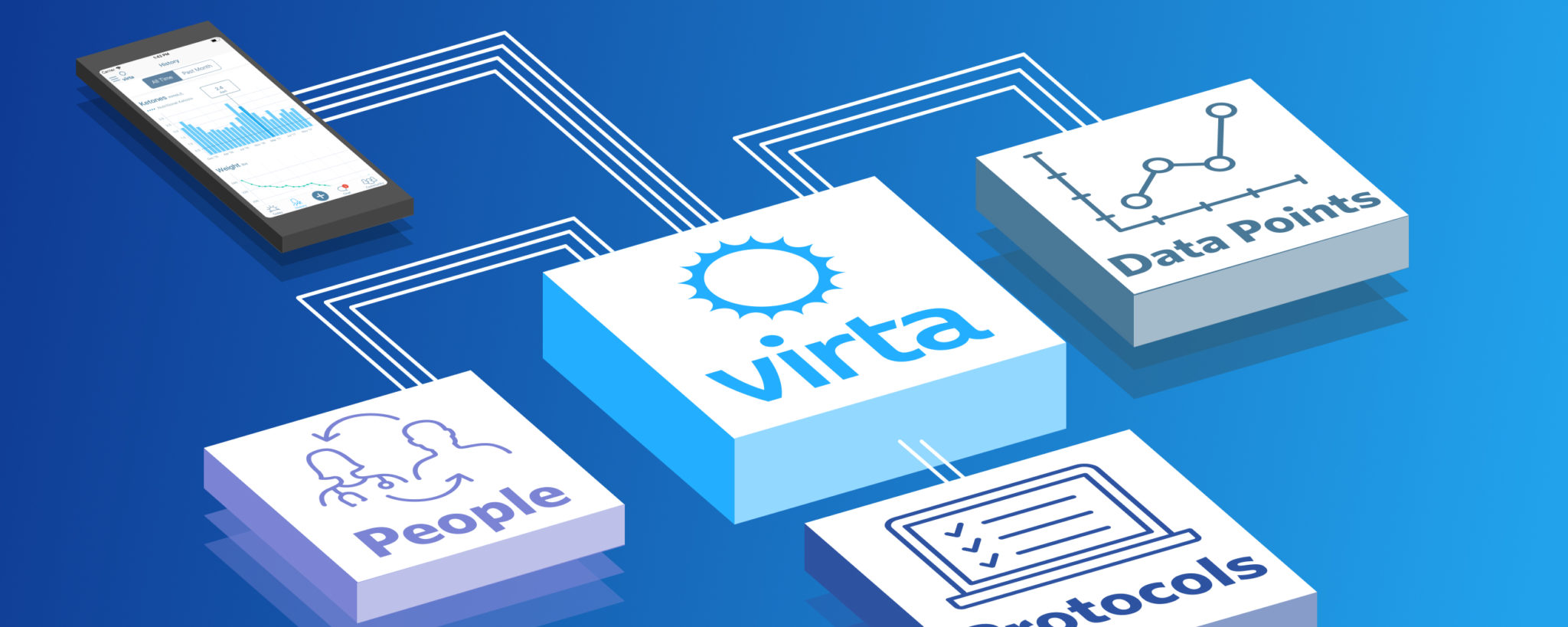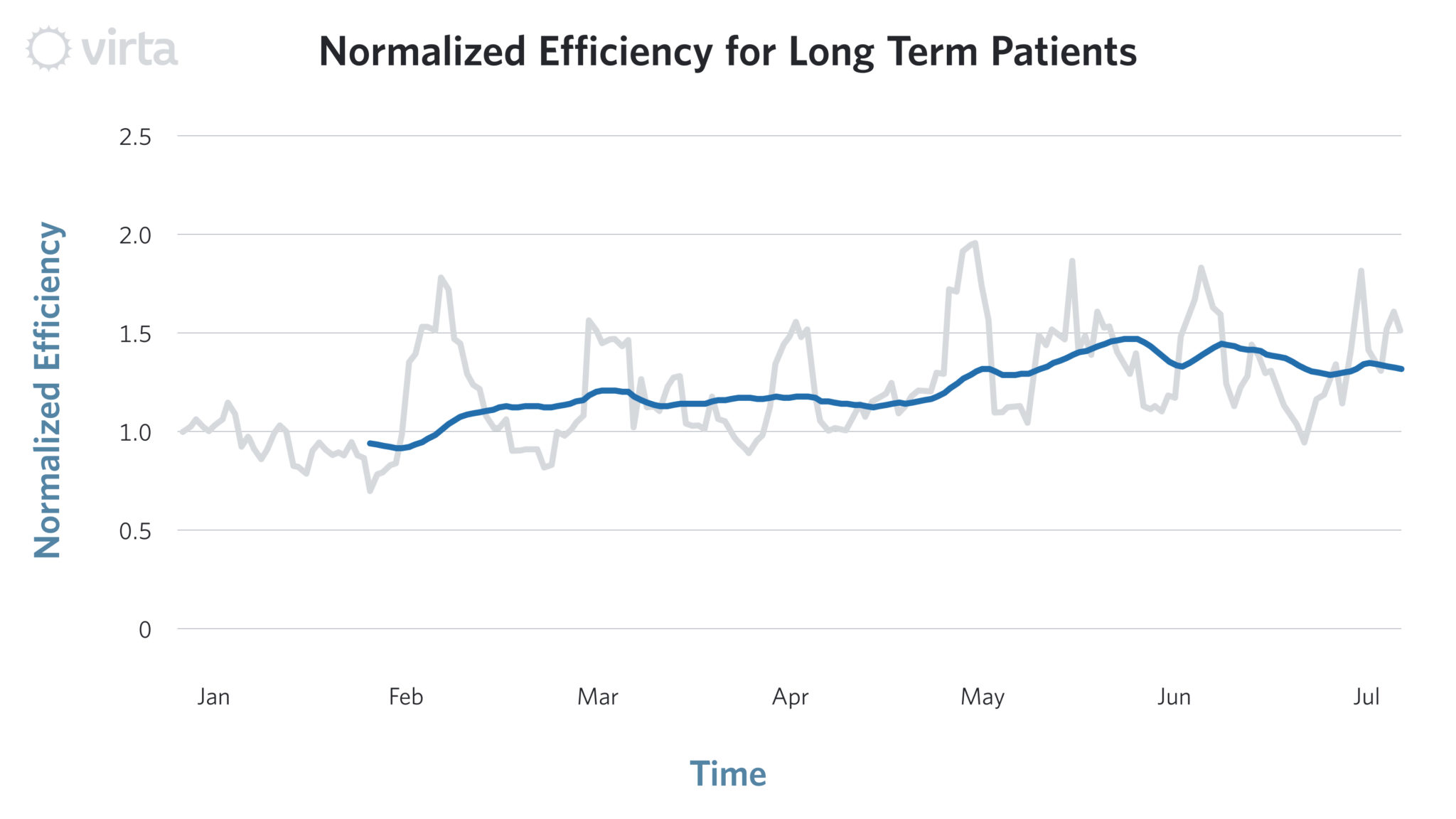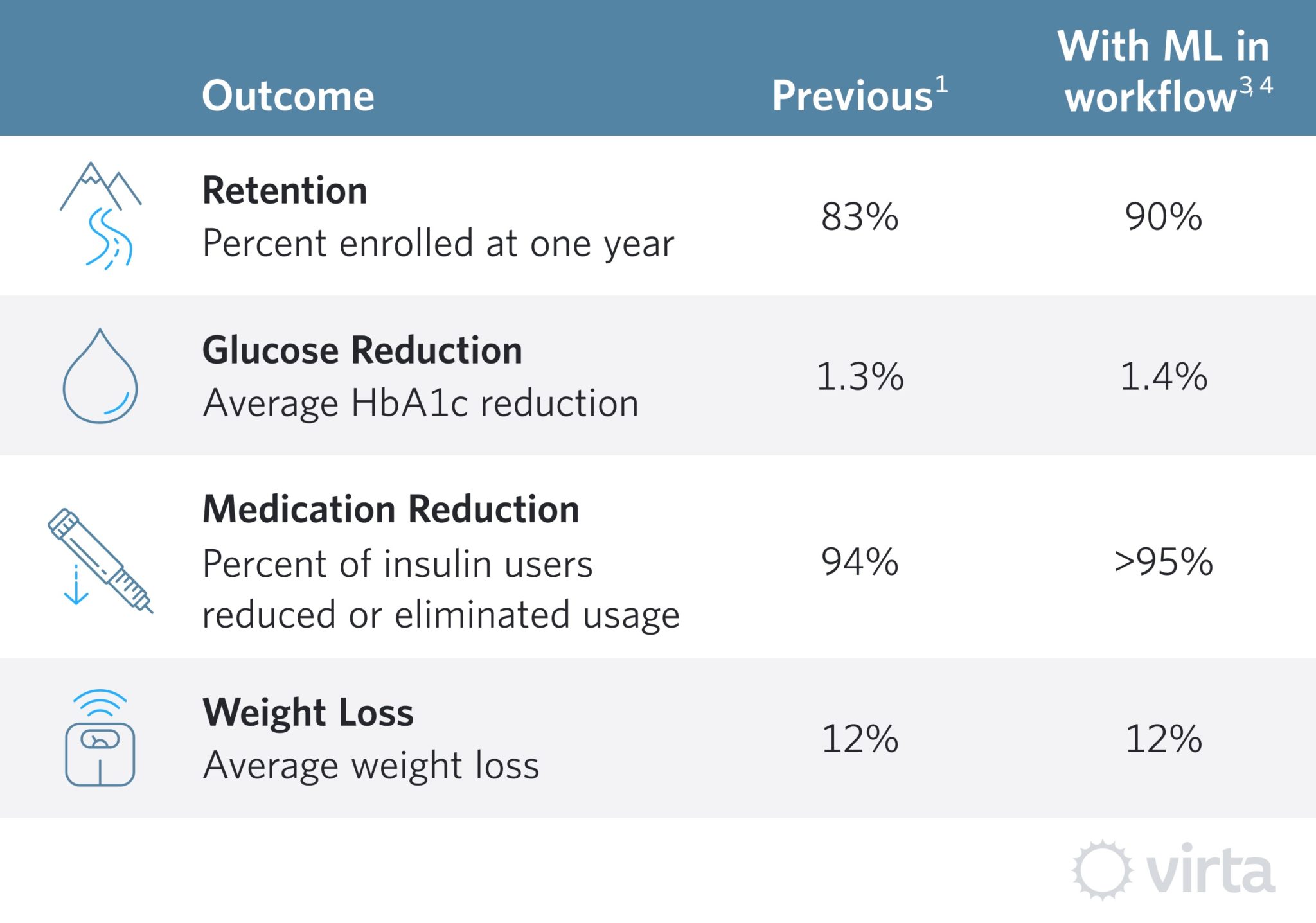
How Machine Learning Enhances the Virta Program

Since the day we began, our mission at Virta has been to reverse type 2 diabetes in 100 million people by 2025. It’s a bold goal, and unsurprisingly, people often ask, “How will you get there?”
It starts with the right intervention. Without addressing the underlying causes of type 2 diabetes, we simply can’t hope to be successful with one person, let alone millions. In our peer-reviewed outcomes, among the 83% who remained enrolled at 1 year, 60% achieved reversal (HbA1c below 6.5% while not taking any diabetes-specific medications). Meanwhile, a group receiving usual care saw both HbA1c and medication usage trend upwards.¹
Yet, even with the right intervention, reaching the 100 million person goal requires a radical change in the current standard of care in terms of treatment effectiveness and efficiency. This is where technology comes into play.
To deliver efficient and scalable care, we have developed a suite of custom software tools and machine learning (ML) algorithms that give our providers and health coaches “super powers.” Our data science and engineering teams collaborate with clinicians to develop and embed actionable machine learning products into the coach workflow. The algorithms learn patterns from our prior patient data and are validated both quantitatively and qualitatively based on clinician feedback.²
Recently, Virta was honored to present at the annual Conference on Health IT and Analytics (CHITA) and discuss some of our ML algorithms and their impact:³
- We can predict treatment dropout and weight-gain risk months in advance so that coaches can proactively intervene and help patients stay on track
- We have decreased the need for inconvenient blood draws by estimating certain lab test results
- We have developed an overall Priority Score for patients that identifies & prioritizes those who would benefit from additional coach outreach
With this type of information at their fingertips, our clinical team can start the day focused on those who need it most, while reducing the time spent inefficiently sifting through patient data.
To give you a sense of the results, the Priority Score algorithm was launched in early March 2018, and since then, coach efficiency (measured as patients served per hour) has increased 25–50% for long term patients (defined as those beyond 180 days since starting treatment).

With increased efficiency, one might assume that effectiveness decreases. In fact, the exact opposite happens. The outcomes for those patients who have recently reached one year (and consented to share their data for research) are actually better than those from the clinical trial,¹,³,⁴ during which these ML algorithms were not in use.

To be clear, our commercial patient cohort differs from our trial patient cohort in a few ways and the components of the Virta program are continuously improving. Thus, the metrics may overstate the impact of the Priority Score. Nonetheless, it is clear the machine learning initiatives, in combination with other technical innovations, help superpower our clinicians and are essential to accomplishing our mission of reversing diabetes in 100 million by 2025.
This blog is intended for informational purposes only and is not meant to be a substitute for professional medical advice, diagnosis, or treatment. Always seek the advice of your physician or other qualified health provider with any questions you may have regarding a medical condition or any advice relating to your health. View full disclaimer
Are you living with type 2 diabetes, prediabetes, or unwanted weight?

1. Hallberg SJ, McKenzie AL, Williams P, Bhanpuri NH, et al. Effectiveness and Safety of a Novel Care Model for the Management of Type 2 Diabetes at One Year: An Open Label, Non-Randomized, Controlled Study. Diabetes Ther. 2018. DOI: https://doi.org/10.1007/s13300-018-0373-9
2. Bhanpuri NH. Driving Action with Machine Learning, Data Science for Social Good, September 2017.
3. Bhanpuri NH, Ma’ruf AQ, McKenzie AL, Metzgar CJ, et al. Analytics and artificial intelligence underlying continuous remote care workflows to achieve disease status improvement for type 2 diabetes. Conference on Health IT and Analytics (CHITA), October 2018.
4. Virta Health Registry for Remote Care of Chronic Conditions, accessed August 17, 2018 & October 10, 2018.






.jpg)

